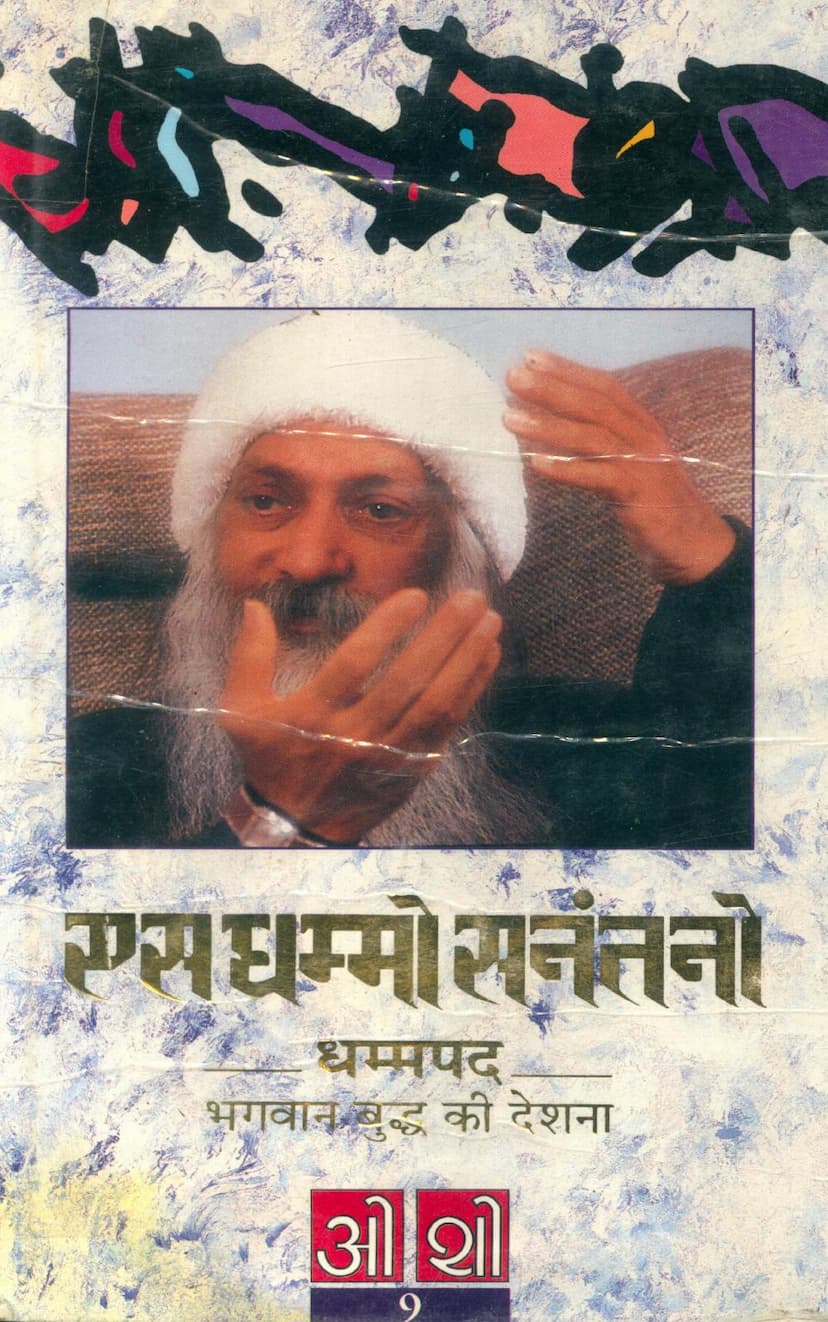Dhammapada 09
Added to library: September 1, 2025

Summary
Here's a comprehensive summary of the Jain text "Dhammapada 09" by Osho Rajnish, based on the provided pages:
Overall Theme and Context:
This book, "Dhammapada 09," is part of a series of discourses by Osho Rajnish on the Dhammapada, which he presents as the teachings of Gautam Buddha. The core message revolves around Dharma as one's true nature and the path to realizing this through meditation (Dhyana). Osho emphasizes that true understanding and spiritual awakening come not from intellectual pursuit but from direct experience, primarily facilitated by meditation.
Key Concepts and Osho's Interpretation:
-
Buddha as a Seer, Not a Philosopher: Osho distinguishes Buddha from philosophers. Buddha, he states, was a "seer" (draṣṭā) who experienced truth directly, rather than a philosopher who theorizes. True understanding comes from seeing, not just thinking. The path to "seeing" is through meditation, which opens the inner eye.
-
Meditation as Unveiling: Osho defines meditation as the "art of removing the veil" (parda haṭānā kī kalā). This veil is not external but internal, woven from thoughts—both good and bad. When one can transcend or still these thoughts, meditation happens. The state of being thoughtless (nirvichār daśā) is meditation.
-
The Eternal Dharma (Sanātan Dharma): The title itself, "S Dharma Sanantano," signifies that Dharma is eternal. Osho asserts that Buddha's teachings weren't about establishing a new religion or philosophy but about re-emphasizing the eternal, inherent nature of reality and the self, accessible to all through inner exploration.
-
Practicality and Experiential Truth: Buddha's teachings are presented as intensely practical and experiential, not theoretical. Osho uses anecdotes and examples from everyday life to illustrate how profound truths can be discovered in simple moments.
- The Poet Chang Ching: The story of the Chinese poet Chang Ching, who found beauty not in books but by simply opening his window to nature, highlights the importance of direct experience.
- The Sleepless Night: Osho suggests utilizing sleepless nights as opportunities for meditation, listening to the silence and the sounds of nature to connect with inner peace.
-
"Dharma Tum Ho" (You are Dharma): A central theme is that Dharma is not something external to be acquired, but one's inherent being. The discourses repeatedly point inward, reminding listeners that they are Dharma, their true nature.
-
The Importance of "Being" over "Doing": The teachings steer away from mere actions or rituals and emphasize the state of "being." True spiritual progress comes from inner transformation, not outward conformity.
-
Seven Key Aspects of Buddha's Teachings: Osho outlines seven fundamental characteristics of Buddha's approach:
- Seer, Not Philosopher: Emphasizing direct experience.
- Original, Not Traditional: Not relying on past authorities but on personal realization. Buddha invites individuals to test his words, like a scientist testing a hypothesis.
- Scientific, Not Dogmatic: Buddha brought scientific rigor to spiritual inquiry, basing his teachings on observable inner phenomena.
- Practical, Not Abstract: While aiming for the highest truth, the approach remains grounded in everyday reality.
- Humanistic, Not Ritualistic: The focus is on the individual's well-being and growth, prioritizing humanity over rigid rules.
- Wisdom-Based, Not Rule-Based: Actions are judged by their conscious intentionality (bodh/awareness) rather than adherence to external rules.
- Ease-Based, Not Striving-Based: Encouraging a natural, spontaneous approach to spirituality rather than forceful effort, which often stems from ego.
-
Critique of External Practices: Osho subtly critiques rituals and external forms that lack inner substance, whether they are the superficial practices of some religious adherents or the intellectual debates of scholars who miss the experiential core.
-
The Nature of True Pandits: A "pandit" (wise person) is not one who speaks much or merely memorizes scriptures, but one who embodies truth, is fearless, harmless, and has achieved self-control.
-
"Sanatan Dharma" as Inner Nature: The eternal Dharma is not a set of rules but the innate, unchanging essence of existence, which is within each individual and can be accessed through meditation.
-
The Power of Direct Experience: Throughout the discourses, Osho stresses that spiritual truths are not to be believed intellectually but to be experienced. The Dhammapada, when understood through Osho's lens, becomes a guide to this inner journey.
Structure of the Discourses:
The book appears to present Osho's discourses on specific verses of the Dhammapada, interspersed with illustrative stories and dialogues. The structure includes:
- Introduction/Foreword: Setting the context and introducing the essence of Buddha's teachings as interpreted by Osho.
- Discourse Sections: Each section focuses on particular verses or themes from the Dhammapada, explained through Osho's unique perspective, often weaving in anecdotes and addressing common human tendencies and misconceptions.
- Key Themes Explored: The discourses touch upon themes like:
- The nature of true wisdom versus mere knowledge.
- The role of the mind and how to transcend its limitations.
- The meaning of stillness, silence, and equanimity.
- The difference between external adherence and inner transformation.
- The path to liberation through self-awareness and meditation.
- The critique of dogmatism and blind faith.
Key Takeaway:
The overarching message is that the path to liberation and true understanding lies not in accumulating external knowledge or following rigid rules, but in cultivating inner awareness, stillness, and direct experience through meditation. Osho urges readers to turn inward, discover their own inner Buddha-nature, and live from that awakened state. The Dhammapada, as presented by Osho, is a call to this inner revolution, emphasizing that the "Dharma" is not something to be found outside but something to be realized within.